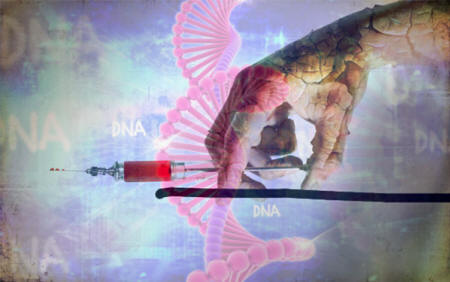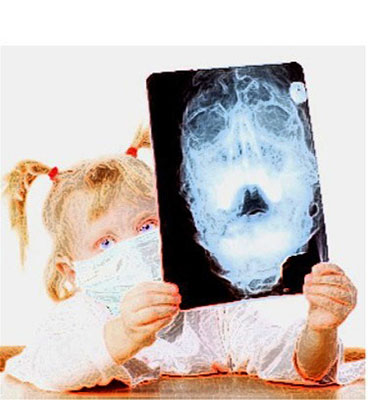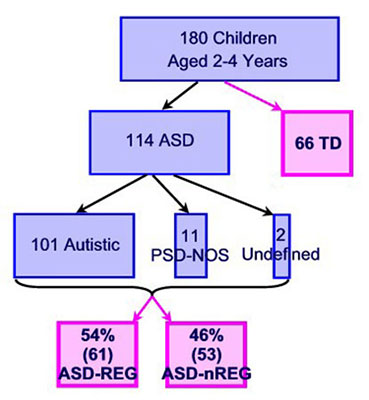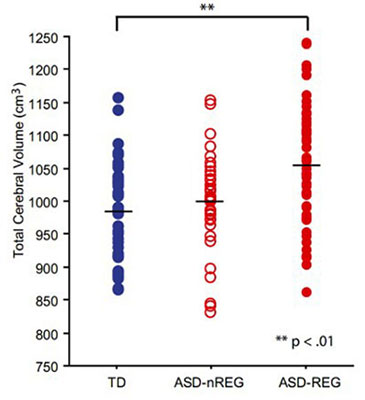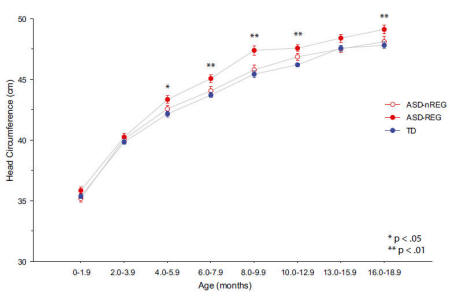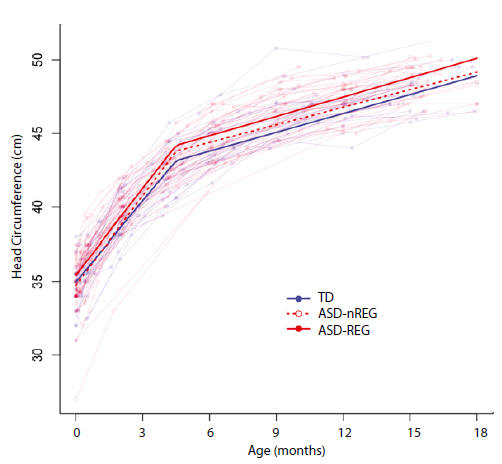|
Another effort to discount vaccinations as a source of autism has gone into research to prove defective genes as the major culprit.
Some epidemiological studies based on twins with autism spectrum disorders was done as early as the mid-1970s. Since then, autism has increased 40-fold.
All this from a sudden case of bad genes? This rapid autism rise has coincided with a dramatic increase of early childhood vaccination schedules over the same period, which has been an almost four-fold increase.
The gene theory does not explain how healthy babies suddenly became autistic after undergoing part of an intense series of vaccinations, some shots with multiple-vaccines, at newly born or toddler age.
As a matter of fact, there is very little effort to objectively pursue the autism-vaccination connection.
Gene research opposition to the gene theories of autism, or gene theories of many diseases, comes from those who consider environmental causes as primary causal factors, not vaccinations.
Even that opposition is out-funded by the genetic research into autism mindset: $1 billion to $40 million or 25 to 1 over the past ten years. Of course, there is little or no funded research for vaccinations as a major cause for autism. And very little gets out into mainstream media circles about actual adverse effects from vaccinations.
The Vaccine Adverse Effect Reporting System (VAERS) was set up by the CDC for medical professionals to voluntarily report vaccination adverse effects. How many are actually reported is estimated at around 5%.
Then there is the Vaccine Injury Compensation Program, informally known as the "vaccine court", set up by Congress in 1986-88 to award vaccination injury victims. A large portion of the funds for compensation come from a vaccine industry tax of 75 cents per dose.
Families granted awards by this court are under gag orders to not discuss their case with the potential threat of losing their annual medical care funding.
This court has since become more difficult and stingy while earning interest revenue off the 2 billion dollars accrued in the fund’s financial pool.
A Flawed study
One semi-recent study (Brain enlargement is associated with regression in preschool-age boys with autism spectrum disorders) used MIR brain scans of three-year-olds with autism spectrum disorders compared to three-year-olds developing normally.
They found that the children with autism had slightly larger brains than normal children. Then they concluded that this "proved" there was no case for vaccines as causal.
Huh...?
Heidi Stevenson of Gaia Health easily debunked (New Study Claims Autistic Boys’ Brain Size Clears MMR It Actually Implicates All Vaccines) this flaw-filled study and concluded that it implicated the vaccine-autism link even more.
The brains progressive enlarging synchronized with the CDC’s recommended vaccine schedule.
The study subjects’ vaccine records were conveniently excluded. Heidi asserted the enlarged brains were swollen from inflammation, which is what vaccines can and do cause.
Therefore, this study inadvertently supports the vaccine-autism connection.
Naturally, the mainstream press dutifully passed on the study’s press releases that deflect vaccines as having anything to do with autism.
Where Research Grants Should Go
The complexity of genetic research for disease creates a great deal of work for a lot of researchers.
More work, more money, and keeping busy with what one enjoys. But according to a GreenMedInfo article by Sayer Ji, only 1% of disease is caused by defective genes.
The study doesn’t eliminate the gene factor completely, though. What is focused on is how genes react to different environmental toxins, which include toxic vaccines of course. All this money for proving genetics to be the root cause of autism is going into rabbit holes to deflect attention from vaccine-autism connections.
Instead, there should be more focus on what can be done to remedy the autism pandemic.
Backing off vaccine schedules and not demonizing vaccine refusal parents would be a good start, as well as not making compliance to those vaccine schedules a prerequisite for pediatric care and school enrollment. Or, at the very least, how about some real research into the issue.
Funding that leads to genetic rabbit holes should be for exploring actual potential treatments that already exist for autism, such as: Homeopathy therapy from a highly experienced practitioner, and Gut And Psychology Syndrome (GAPS) therapy developed by Dr. Natasha Campbell-McBride.
She created the GAPS protocol by successfully tackling her son’s autism.
Dr. Campbell-Mcbride’s dietary guide is in her book Gut and Psychology Syndrome - Natural treatment for autism, ADHD/ADD, dyslexia, dyspraxia, depression and schizophrenia.
It Actually Implicates All Vaccines
from
Gaia-Health Website
Another study obfuscating the cause of autism now purports to show that boys with regressive autism have bigger brains, but that they don’t start to grow until age four months.
They’re claiming that, on average, these boys have brains that are 6% bigger than normal.
Aside from the fact that the study size is too small to draw any statistical conclusions - though that certainly didn’t bother the authors - the results do not support the conclusion drawn.
Instead, it supports vaccinations as a primary cause of autism.
The hype, of course, is quite different: Using statistical manipulation, the study focuses on three different brain size measurements in 180 children, approximately one-third each defined as regressively autistic, non-regressively autistic, and normally developed.
Not all measurements were done in all children, and no correlations were drawn between the children for whom all measurements were taken and those for whom they weren’t.
Regressive and Non-regressive Autism
The authors distinguish between regressive and non-regressive autism. What do they mean by that?
In context, the earliest reference to two types is in the preamble, where it identifies them as "early onset or regressive". From there, it simply uses the term "non-regressive" instead of "early onset".
Substitute the term "early onset" wherever the study says "non-regressive", and we have something that makes sense.
Early onset autism is much less likely to be seen as regressive, since there is much less development then. There is no speech to have been lost, one of the most significant factors parents note. It isn’t until a child is 4-6 months of age that serious eye contact starts to be made. So, the lost eye contact that so many parents of autistic children first note never existed.
So,
what the authors mean by "non-regressive" is simply that the autism
started too early for regression to have been clearly noted.
The Study
"Brain enlargement is associated with regression in preschool-age boys with autism spectrum disorders" was published in PNAS (Proceedings of the National Academy of Sciences).
It was funded by,
MIND’s autism focus is exclusively on the concept of genetic cause, as clearly shown by their single game plan, the Autism Phenome Project. NIMH’s focus on anything but vaccinations as the cause is infamous, and can be seen on their Autism Spectrum Disorders page.
It is, therefore, unsurprising that the results of this study were spun so outrageously.
Diagnoses of Children in the Study
Of the 180 children, all aged 2-4 years, 114 were defined as having autistic spectrum disorder (ASD).
Of these 114, 101 were defined as autistic and 11 as having "pervasive developmental disorder - not otherwise specified" (PDD-NOS). 66 children were defined as "typically developing" (TD).
The ASD children were further divided. 54% were diagnosed as having regressive ASD (ASD-REG), meaning that their conditions had regressed. 46% were diagnosed as having non-regressive ASD (ASD-nREG), meaning that their conditions were constant.
The researchers did MRIs of about 85% of the children in the study at age 3 (sometime between the third and fourth birthdays). They were done only during natural sleep, which is why they were unable to obtain MRIs of all the children.
Also, past clinical records of the children’s head circumference were examined to identify indications of megalancephaly, abnormal enlargement of the head.
The primary result that’s hyped is the one that says boys with regressive autism (ASD-REG) have brains that are 6% bigger than normal. Little or no mention is made of the rest of the results, those on head circumference from clinical records up to 18 months in age.
The first thing that needs to be addressed is that the size of the study is small. Based on 61 regressive ASD children, 53 non-regressive ASD children, and 66 children defined as developmentally normal, just one or two children outside the normal range could easily skew the results.
However, we’ll take the study at face value by assuming that the results are not seriously skewed.
Cerebral Volume of Age 3 Children: TD: typically developing. ASD-REG: regressive ASD. ASD-nREG: non-regressive ASD.
Total Cerebral Volume
The authors appear to show that ASD-REG boys aged 3 appear to have a total cerebral volume (TCV) that averages about 6% larger than the brain of a normal same-aged boy.
The chart on the left shows brain volumes of the boys in the study at age 3. There is one dot for each boy who received an MRI to document brain size. The mean is given by the horizontal line in each grouping.
It appears that aged 3 boys with regressive autism do have somewhat bigger brains, and that boys with non-regressive autism don’t. There is nothing here, though, to indicate how this relates to brain sizes at younger ages.
What was the brain size like prior to age 3? This study provides some insight.
Head Circumference Ages 0-18 Months: TD: typically developing. ASD-REG: regressive ASD. ASD-nREG: nonregressive ASD.
Head Circumference
The head circumference of boys with regressive autism was shown to be larger from ages 4 through 18 months.
The researchers identify this difference as an average of 2-3% greater than the TD controls from 4-18.9 months, and reaching 5.3% more between 16 and 18.9 months.
Though not as significant, it also shows the head circumference of boys with non-regressive autism are consistently somewhat larger than normal boys. The study identifies a 1.5% difference from 10-14 months.
The head circumference of 77 of the boys had been measured at least 3 times from birth through 18 months. These measurements were all charted in the single graph shown below.
The results are hugely variant:
Autism Head Circumference Longitudinal Measurement
The head circumference of 77 of the boys had been measured at least 3 times from birth through 18 months.
These measurements were all charted in a single graph. Those results demonstrate how hugely variant the results were.
The chart above is difficult to see, but if you look carefully, you’ll note that the child who - by far - had the largest head circumference was one defined as developmentally normal! Virtually by definition, a child whose brain enlarges abnormally, especially as much as this one did, must suffer from developmental problems.
Therefore, either the measurements were very poor or the diagnoses were very poor.
Either poor measurements or poor diagnoses must indicate that the study itself is deeply flawed. One child labeled as normal whose brain size hugely outstripped any of the others must be explained, especially in a study of this small size.
Yet the authors make no mention of it.
Taking the Study at Face Value - A Better Explanation of the Results
The study does seem to show that, on average and using the diagnoses and definitions the researchers have chosen, the brains of children with "regressive autism" are larger than the brains of children with "non-regressive autism".
They use their results to make rather sweeping generalizations. The authors concluded:
So, the authors’ bias is clearly stated.
Their ultimate conclusion is that autism is not caused by vaccines. This makes little sense, given the information they presented.
A simple and logical explanation for the results is clarified by simply examining the standard US vaccination schedule, as shown in the CDC’s schedule for children from birth to age 6.
The first 4 months of life see babies subjected to hepatitis B vaccine somewhere between birth and 3 months. At 2 and 4 months, they are given diphtheria, tetanus, pertussis, Haemophilus influenzaea type b, pneumococcal, and polio vaccines. Most of these are given closer to 4 months of age than birth.
When do we see the first brain enlargement? Around 4 months of age, just as the number of vaccinations is increased.
Then, we see brain enlargement starting to really take off at 6 months of age, just as the third DTaP (diphtheria, tetanus, pertussis) vaccination is given.
What the study seems to reveal is that there’s a worsening of brain swelling as more vaccinations are given. Focusing on only the MMR vaccine is entirely misleading. Certainly, it isn’t the point at which we see this pattern start - but we do see the brain inflammation continuing with it.
Now, let’s get past the nonsense of the study’s reference to the idea that the brain is simply enlarging. It isn’t. The brains of these children are swollen. They’re suffering from inflammation of the brain, another term for encephalitis.
If this study is valid, it documents a pattern of encephalitis that suspiciously parallels the implementation of the vaccine schedule in young children.
Real Implications
This study will likely be used to give the impression that the association between the MMR vaccine and autism is a dead issue, and secondarily to imply that vaccinations have nothing to do with autism.
Its purpose is to redirect attention away from the experiences of countless parents who have seen their children sink into autism, and who consistently express the same experiences. They are to be treated as poor sad bereaved parents, people whose trauma at the loss of their children’s futures and the burden of caring for them explains their delusion.
Indeed, we’re expected to buy the idea that these parents suffer under a mass delusion that their children were once normal, or that if they actually were, they’re now changed by reasons unknown, but probably genetic.
We’re supposed to ignore the fact that autism was virtually unknown 40 years ago, and accept the ludicrous idea that a new genetic disorder has suddenly come into being on a mass scale.
We’re supposed to ignore the immense expense that these children, many of whom are now growing into adulthood with enormous needs, are placing on our society.
These children are the jetsam tossed overboard to keep the Big Pharma ship afloat.
As other pharmaceutical product lines, like antibiotics, are failing and no new chemicals are filling the pipeline, Big Pharma is more and more reliant on vaccines to stay afloat.
If the price is your children’s lives and futures, it apparently doesn’t matter.
|

